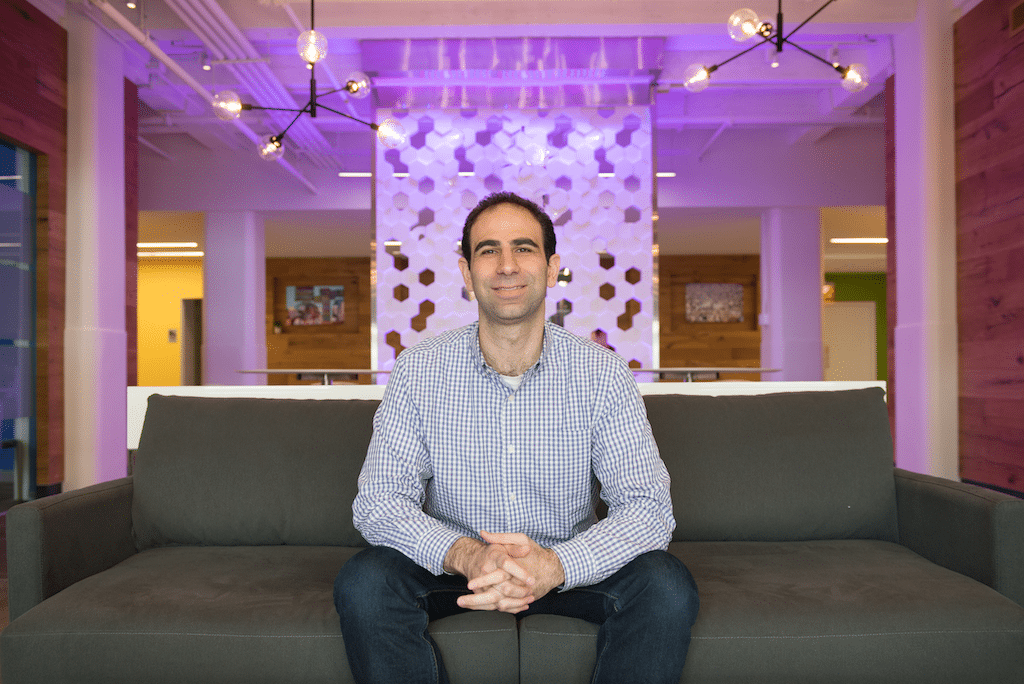Skift Take
For a travel startup like Oyster, there's nothing like attracting the interest of a deep-pocketed buyer with a huge consumer audience. Oyster knew that is what it needed and it bucked the odds and lived to fight another day.
Editor’s Note: This is the inaugural piece in our Skift Startup Stories series. In it we’ll document travel startup problems, solutions, and lessons from a variety of angles, hoping to shed light on what separates the winners from the losers.
You can read all of the stories in the series here.
Prospects looked bleak in June 2013 for Oyster.com, a website that featured realistic and professionally taken hotel photos and expert reviews, when it fired most of its staff and put itself up for sale.
It appeared as though Oyster’s journey would turn out to be a sadly familiar story in the annals of travel startups, another unhappy ending.
Even then Oyster’s saga was somewhat distinct, though. Many travel startups that fail are essentially copycat sites, producing a slightly different riff on a very familiar song.
Oyster, which bills itself as “The Hotel Tell-All,” indeed was doing something differently than just about everyone else.
Founded in 2008 by Elie Seidman and Ariel Charytan, Oyster showcased its hotel photo fakeouts, contrasting unblemished and glitzy marketing photos from hotels on sites such as Orbitz with its own realistic shots of the tiny or overcrowded swimming pool or cramped guest room. Its journalist-written hotel reviews not only told prospective guests what was attractive about a property but also outlined the cons.
But Oyster’s problem was that it just didn’t have the audience and resources for a sustainable business given the expense of sending staff or freelancers into the field to perform on-site hotel reviews and to update them periodically.
Like innumerable startups, Oyster labored away in trying to come up with a business model that could monetize its bevy of content.
As news broke two years ago that Oyster was trying to find a buyer, Oyster management told employees it notched modest revenue of nearly $500,000 in the first quarter of 2013. But in the Fall of 2013 the hotel research and shopping site carried out a couple of rounds of layoffs despite having attracted a series C funding round led by the Travel Channel in 2011 and taking in a total of $18 million in venture funding since its founding.
That Was Then and This Is Now
Despite those earlier struggles, prospects are upbeat today for Oyster as TripAdvisor acquired the company in October 2013. The acquisition price couldn’t have been overwhelmingly large: TripAdvisor didn’t disclose the purchase price but acquired six startups, including Oyster, that year for a total cash consideration of $34.8 million net of cash acquired.
Unlike some of TripAdvisor’s acquisitions, such as that of Wanderfly, CruiseWise and TinyPost in recent years, the Oyster brand lives on to fight another day.
Just five staffers made the transition to the new Oyster within TripAdvisor, says co-founder and current Oyster general manager Eytan Seidman, who was vice president of product under the old regime. Oyster today has around 35 employees working in New York City and London, and another 125 to 150 freelancers visiting hotels to review and photograph them.
The fixed cost of sending reviewers to hotels has “come down a little but that hasn’t changed a ton, honestly,” Seidman says. “But what we have is a much bigger audience. And that makes all the difference in the world.”
SimilarWeb showed Oyster with 1.1 million site visitors in March 2015, and Seidman says the tally actually was 1.5 million monthly visitors during the first quarter. While Oyster had expert reviews of around 3,000 hotels at the time of the TripAdvisor acquisition, Oyster now boasts reviews and photos of 10,000 properties in 76 countries.
Oyster’s “professional photos” have been integrated into TripAdvisor’s sites as a way to provide an additional research layer beyond TripAdvisor’s core user-generated content, and Oyster.com recently added panoramic images of guest rooms, lobbies, pools and beaches using fish-eye lenses and High Dynamic Range photography at 2,800 properties.
Business Model Leverage
Observers — including myself — who thought that TripAdvisor was merely interested in acquiring Oyster’s hotel photography and other content and would eventually kill the brand were apparently wrong.
Oyster’s metric of 1.5 million monthly visitors is still very small, although Seidman says the company’s visitors and hotel content are growing strongly.
One thing that Oyster now has that it didn’t have before is the power of TripAdvisor, which serves as Oyster’s largest referral site, and fields a sales force that includes Oyster hotel metasearch and display advertising as part of the TripAdvisor sales pitch.
Seidman says there are salespeople dedicated to selling Oyster’s products, as well.
Metasearch was Oyster’s dominant revenue source before the TripAdvisor acquisition and it is even more dominant now, Seidman says.
TripAdvisor, of course, launched its own hotel metasearch product in 2013 and into 2014.
“Obviously we benefit from the scale monetization that TripAdvisor has,” Seidman says. “We make money in a very similar method through display advertising and through metasearch. We are going to continue to do that and it is humming along nicely.”
If your biggest revenue stream is from hotel metasearch, it is nice to have a hugely influential parent with a similar product that can sell both metas to clients in a package.
“We had the same [meta] product pre-acquisition,” Seidman says. “But now instead of it being homegrown we are leveraging TripAdvisor’s overall meta.”
The same benefits apply to display advertising sales.
“Our display ad sales rolled into a part of TripAdvisor’s sales,” Seidman says. “It’s the same overall concept. We get some of the scale benefits of going out and selling display and it’s not just, ‘Hey, here’s Oyster,’ which has 1.5 million people on it, 20 milion pages a month, but it’s selling a broader set of products to the advertiser who can buy a much larger set of things.”
There are some startups that have a differentiated, if not unique, product but they don’t survive because they have to compete for marketing voice with much larger and sometimes smarter players or perhaps the company just isn’t different enough.
The case of hotel metasearch site Room77, which ended up licensing its technology to Google and dispatching much of its workforce to pick up paychecks at Google, comes to mind. Room77 had features, including offering senior and military discounts and displaying hotel floor plans and room views, that were truly different from those of rivals but in the end was it all really different enough?
And Room77’s marketing resources had to face off against those of Priceline, Expedia and TripAdvisor.
“Where we got into a lot of struggles in 2013 is that you need to have the capital and the scale of users, of consumers, coming in the door to go and drive the revenue,” Seidman says of Oyster. “We were just smaller. We had a great product that people really loved. That hasn’t changed.”
Acquisitions are a Two-Way Street
If TripAdvisor gives Oyster the runway over the next few years to develop its brand, then the foundation wouldn’t just have been the quality of the product or execution but also in the savviness of TripAdvisor’s mergers and acquisitions team in scouting the product and knowing how to take advantage of it.
“There was really good alignment from Steve [Kaufer, TripAdvisor CEO], Adam Medros [senior vice president global product] and David Krauter [president, Smarter Travel] at TripAdvisor, saying how we think very specifically Oyster can fit in,” Seidman says. “It wasn’t a very vague thing. It was a clear thing. And that very clear thing is now on TripAdvisor.com.”
Seidman, who was a program manager at Microsoft before co-founding Oyster in 2008, recalls that integrations of acquired companies don’t always work out as envisioned.
“Perhaps I saw things go wrong when I was at Microsoft when you buy a company and you think you are buying a really great, fully baked product,” Seidman says. “But it turns out you didn’t actually buy that. You hadn’t achieved that product market fit.”
Different Approaches to the Same Problem
Seidman thinks the blend between TripAdvisor and Oyster works well because TripAdvisor at its core is a user-generated content site and it is adding Oyster’s professional photos as a complementary piece that provides additional research value especially when hotels don’t have tons of user reviews. Oyster, meanwhile, remains an expert site.
“There is not a single piece of user-generated content on our site, literally,” Seidman says.
What distinguishes Oyster’s journey from some of its peers that didn’t survive is that Oyster truly was attacking the hotel research problem in a different way — despite the fact that it undoubtedly didn’t endear itself to many hotel marketing teams — and Oyster was fortunate enough to get acquired by TripAdvisor.
What about that thorny problem of finding a business model to sustain sending all those freelancers around the world to spend time at hotels, taking photos and writing reviews?
“It’s been solved by a larger audience,” Seidman says. “Rather than building a product for a million people that we had at the time, now we are building it for 1.5 million people on Oyster.com, at 50 percent growth, and 315 million people on TripAdvisor.”
The jury is still out on Oyster as far as how big the still-small brand can become especially when TripAdvisor.com will obviously get the bulk of the parent company’s attention.
But Seidman likes the tools at his disposal these days.
Says Seidman: “We are able to just kind of go off and execute. Here’s the concept, here’s what you are going to do. There is this thing that is accretive to the core of TripAdvisor and the massive audience that’s there but also Oyster can grow, can continue to run itself and go out and grow itself.”
That’s the plan.
The Daily Newsletter
Our daily coverage of the global travel industry. Written by editors and analysts from across Skift’s brands.
Have a confidential tip for Skift? Get in touch
Tags: oyster, sss, tripadvisor
Photo credit: Eytan Seidman is co-founder and general manager of Oyster, a TripAdvisor company. Oyster

